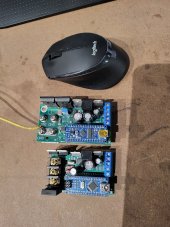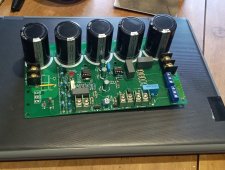2strokeforever
New Member
- Joined
- Dec 12, 2022
- Messages
- 30
It figures out how much excess solar power you have and will "talk" to anything that will accept a 0-5v signal, or a PWM signal. SSR, VFD, ect.
It will throttle your load to use as much power as possible, but back off instantly once something wants the power, turn on the kettle, charge controller kicks into bulk, panels get shaded ect.
It only uses power that would otherwise be wasted. perfect for water heating, AC, irrigation pump ect
Your load can be off of the panel voltage, off the battery voltage, or plugged into the AC out of your inverter.
I am currently using one with a VFD drive to run my redneck air conditioning.
This version will do from 80 to 1000v, if there is enough interest I will consider selling them and possibly make a low voltage version after I finish the updated High voltage version.
It will throttle your load to use as much power as possible, but back off instantly once something wants the power, turn on the kettle, charge controller kicks into bulk, panels get shaded ect.
It only uses power that would otherwise be wasted. perfect for water heating, AC, irrigation pump ect
Your load can be off of the panel voltage, off the battery voltage, or plugged into the AC out of your inverter.
I am currently using one with a VFD drive to run my redneck air conditioning.
This version will do from 80 to 1000v, if there is enough interest I will consider selling them and possibly make a low voltage version after I finish the updated High voltage version.
Attachments
Last edited:






